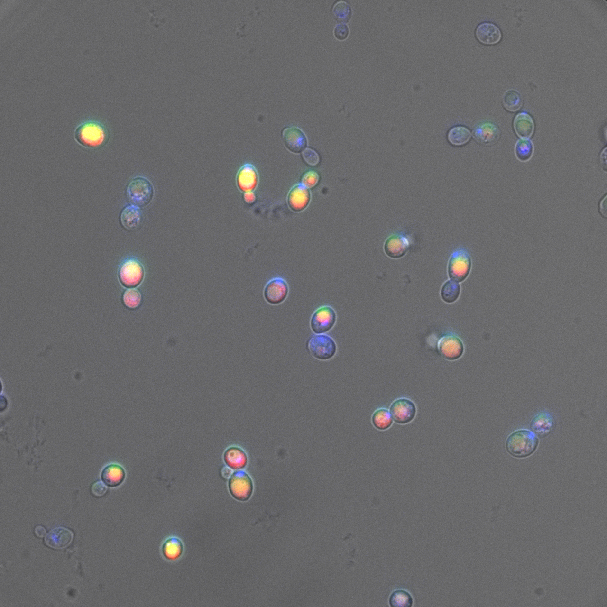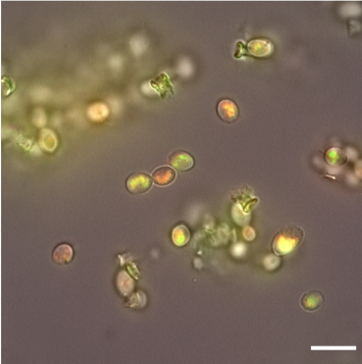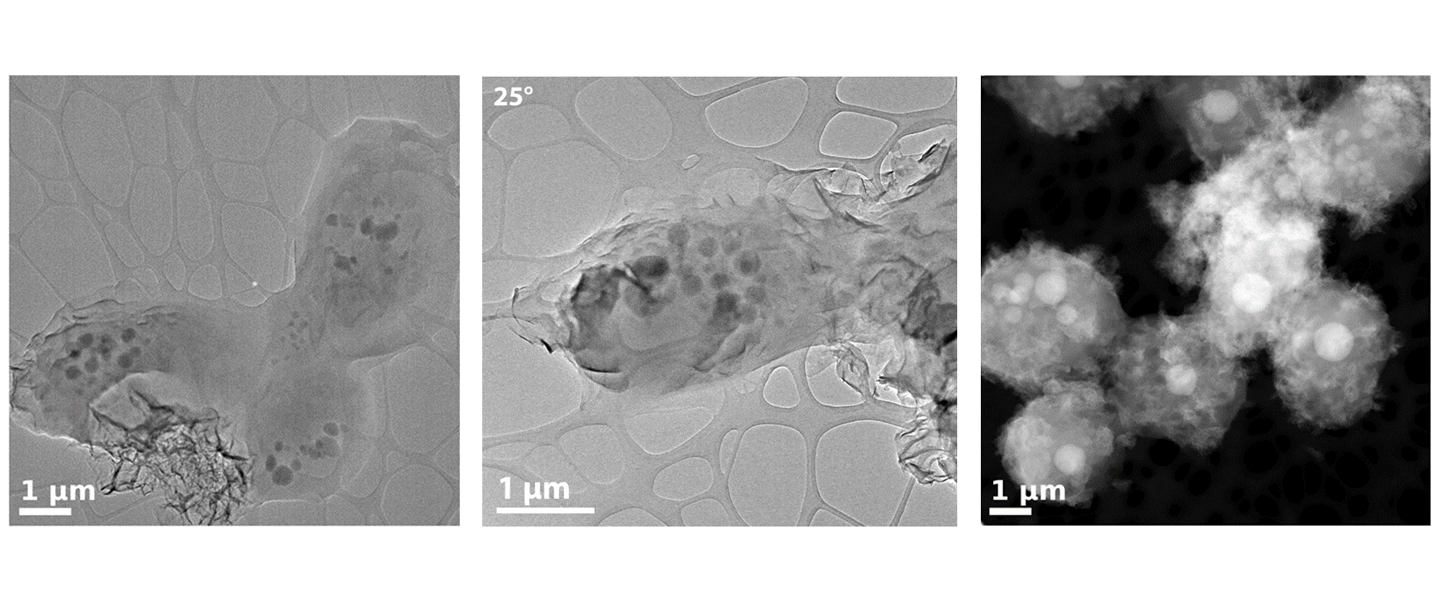Researchers from the Lawrence Berkeley National Laboratory (Berkeley Lab), UC Irvine, and the University of Illinois Urbana-Champaign (UIUC), have used biology to convert human urine into a valuable product.
The team genetically modified yeast to take the elements present in urine and create hydroxyapatite - a calcium and phosphorus-based mineral naturally produced by humans and other animals to build bones and teeth. Commercially manufactured hydroxyapatite is used in surgery and dentistry to repair these structures when they're broken, and the lightweight material's remarkable strength and toughness make it an excellent candidate building material and even as a replacement for some types of plastic.
Their work, recently published in Nature Communications, not only provides a cost-efficient pathway to produce hydroxyapatite, but also a practical mechanism for reducing the cost of wastewater treatment, an energy efficient means of producing fertilizer, and opens the door for other yeast-based technologies that can create useful materials out of scavenged minerals.
A strange brew
The star of the show is the team's strain of Saccharomyces boulardii, a yeast closely related to the species used to brew beer and make bread. S. boulardii likes to grab minerals from its environment and store them inside a special membrane compartment. Co-authors Yasuo Yoshikuni, head of the DNA Synthesis Science Program at the Joint Genome Institute (JGI), and Peter Ercius, staff scientist at the National Center for Electron Microscopy at the Molecular Foundry, were exploring ways to make functional biomaterials with microbes when they realized that S. boulardii was naturally performing activities similar to osteoblasts, the specialized animal cells that make hydroxyapatite and form bone. Both the JGI and the Molecular Foundry are DOE Office of Science user facilities located at Berkeley Lab.
"The serendipitous part is this yeast already had similar molecular mechanisms," said Yoshikuni, who specializes in engineering microbes to produce fuels, chemicals, and materials at the JGI. "Just mild tweaking was sufficient to convert the yeast into a cell factory for hydroxyapatite."
The resulting organism, given the name "osteoyeast," successfully mimics osteoblasts, which are extremely difficult and costly to culture outside a body, while maintaining the low-maintenance lifestyle of yeast. From the outset, the osteoyeast represented a big return on investment by enabling cheaper hydroxyapatite production. But the team saw an opportunity to make a bigger global impact with their invention by using urine as a mineral source - inspired by an emerging trend in biotechnology aptly called "pee-cycling."
"It's kind of exactly what you think it is," said author Behzad Rad, who is Principal Scientific Engineering Associate in the Biological Nanostructures Facility at the Molecular Foundry. "People are trying to collect urine before it hits the sewer system to use the ammonia and phosphate in it for farming and other applications. These components cause environmental issues when wastewater gets into the landscape or ocean, so treatment facilities are already spending a lot of money to neutralize urine. The idea is, why don't we put it to use?"
According to Yoshikuni, pee-cycling hasn't become widespread because the cost of ammonia and phosphate are so low, there's little financial incentive to invest in new, large-scale infrastructure that can recover these ingredients. But now, osteoyeast can make high-value hydroxyapatite out of the phosphorus (and calcium) in urine. And conveniently, the microbes also gather up the ammonia salts in their membrane compartments.
"Today, we use about 1% of the world's energy to make fertilizers from nitrogen gas," he said. "If we're able to produce both hydroxyapatite and make nitrogen fertilizer from the ammonia, we could potentially replace a significant portion of total demand of nitrogen; saving energy while also dramatically reducing the costs at wastewater facilities."
Good bone structure
A key part of this project was confirming that the osteoyeast were accomplishing all the steps of hydroxyapatite production. Initial results indicated the project was a quick success when Isaak Müller and Alex Lin, two postdoctoral scholars at Berkeley Lab and co-first authors on the paper, spotted hydroxyapatite in the culture - but the scientists didn't find the crystalline material inside the yeast. They could see nanoscale mineral granules gathered inside the cells, but weren't sure whether it was the yeast completing the crystal-building process, or if a separate chemical reaction was happening outside the cells. This part of the project was led by Ercius and Rad, using tools at the Molecular Foundry.
Rad used yeast strains tagged with tiny fluorescent proteins and elements to observe the yeast gathering ingredients with optical microscopy, while Ercius employed transmission electron microscopy (TEM) to verify the granules forming in the storage membrane had the same composition as hydroxyapatite. By combining the techniques, they were able to track the entire process. Ercius also used TEM to show the hydroxyapatite is high-quality with an ideal nanostructure.
Meanwhile, Yoshikuni along with Yusuke Otani, fellow co-first author and a postdoctoral scholar at the JGI, demonstrated that the microbes can make this valuable material with impressive efficiency, producing one gram of hydroxyapatite per kilogram of urine.



"Colocalization of all these facilities was key," said Ercius. "That we were able to meet and work together so closely was really critical. I'm not a biologist, and my colleagues are not experts in materials synthesis and characterization. This work showcases what you can do when you combine scientific approaches that aren't usually done together."
Turning yellow into green
To validate that their pee-cycling endeavor is economically viable, the Berkeley Lab scientists turned to co-author Jeremy Guest, Sustainable Design Lead for the DOE Center for Advanced Bioenergy and Bioproducts Innovation at UIUC. Guest and Xinyi (Joy) Zhang, a research scientist at UIUC, performed technoeconomic analysis to simulate distributed hydroxyapatite production systems serving a city the size of San Francisco.
Factoring in the costs of culturing the osteoyeast and separating urine from the wastewater, Guest and Zhang estimate it would cost approximately $19 to make one kilogram of commercial quality hydroxyapatite, which could be sold for $50 to $200 in the U.S. market. The entire system could generate a profit of about $1.4 million per year while reducing the chemical inputs needed to make the wastewater safe.
"It's important that we consider the potential impacts of a full-scale system," said Guest. "We can develop a new technology and demonstrate it in the lab, but is it actually feasible? Is there an opportunity for this innovation in the real world?"
The patented osteoyeast is now available to license for hydroxyapatite production, and the team is working to develop new strains that can synthesize other bio-based materials, or grab and store specific elements to enable environmentally friendly bio-mining. There are almost as many applications for this technology as there are puns to describe it.






